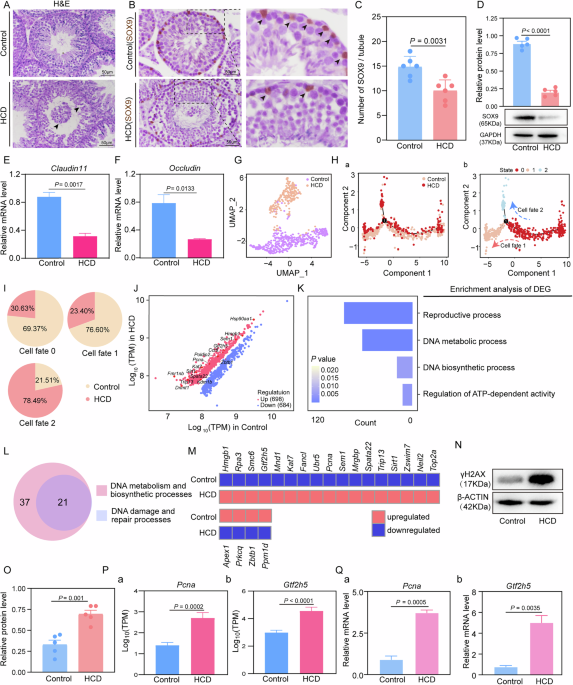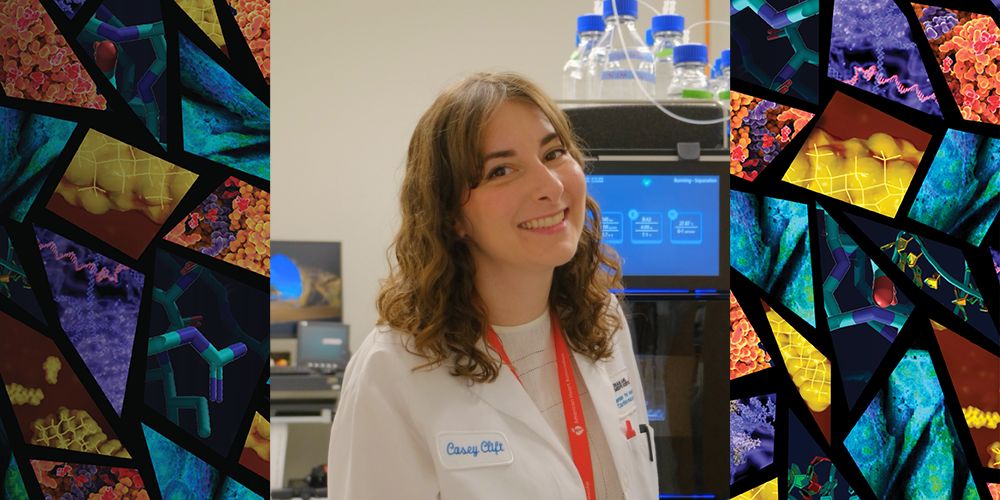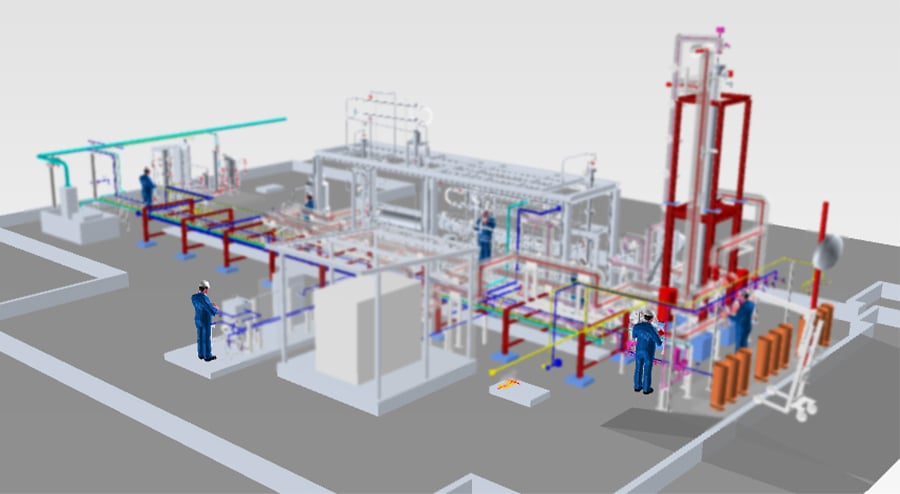NEW YORK – Google’s YouTube will use artificial intelligence to improve the visual clarity of many low-resolution videos on its platform when viewed on TV screens, the web and mobile devices.
YouTube will first implement the feature, known…

NEW YORK – Google’s YouTube will use artificial intelligence to improve the visual clarity of many low-resolution videos on its platform when viewed on TV screens, the web and mobile devices.
YouTube will first implement the feature, known…
GYEONGJU, October 30, 2025 – Hyundai Motor Group (the Group) today held a high-level dialogue on hydrogen strategy at the Asia-Pacific Economic Cooperation (APEC) CEO Summit Korea 2025. Hyundai Motor Group Vice Chair and Hydrogen Council Co-Chair, Jaehoon Chang, joined Hydrogen Council CEO, Ivana Jemelkova, to discuss the current state of the hydrogen industry and its role in sustainable growth across the Asia-Pacific region.
Under the theme “Bridge, Business and Beyond,” the APEC CEO Summit brought together global leaders to address challenges such as regional integration, digital transformation, and sustainability. In the session titled “Hydrogen, Beyond Mobility, New Energy for Society” led by the Group, Vice Chair Chang emphasized hydrogen’s role in achieving carbon neutrality and energy resilience, and called for coordinated efforts to accelerate adoption.
“Hydrogen accelerates carbon neutrality by addressing the intermittency of renewables and enhancing energy resilience,” said Jaehoon Chang, Vice Chair of Hyundai Motor Group. “Hydrogen also stands out as a strategic energy carrier, enabling localized generation and distribution systems—such as off-grid and microgrid ecosystems—that reduce reliance on centralized grids and strengthen communities’ self-sufficiency.”
During the session, Vice Chair Chang and Hydrogen Council CEO, Ivana Jemelkova, shared insights on the Global Hydrogen Compass 2025, which outlines a pivotal moment for the industry—shifting from ambition to delivery with USD 110 billion of committed capital across 510 projects past financial investment decision globally.
Vice Chair Chang also emphasized that long-term collaboration between governments and industry is essential to transform early efforts and innovations into meaningful, scalable outcomes across the hydrogen value chain.
“Since 2020, global capital commitments to clean hydrogen have grown ten times―a remarkable trajectory,” said Ivana Jemelkova, CEO of Hydrogen Council. “Our next big test is demand which requires clear, practical and stable policies and strong public-private collaboration. At the Hydrogen Council, the largest and only CEO-led global business initiative on clean hydrogen, we are proud to work closely with Hyundai Motor Group in their capacity of Council Co-chair to mobilize key players at this pivotal moment and keep moving hydrogen forward.”
Building on the insights shared during the session, the Group outlined how it is translating global momentum into action—by leading efforts to both drive demand and ensure supply across the hydrogen value chain.
To scale up hydrogen generation, the Group is investing in Waste-to-Hydrogen and polymer electrolyte membrane (PEM) electrolysis technologies. For PEM electrolysis, 1MW-class projects are underway in Buan and Boryeong, and a 5MW-class system is being prepared in Jeju. The Jeju project aims to establish a complete green hydrogen ecosystem—from developing mass-production technology for PEM electrolysis to expanding hydrogen mobility applications.
Since PEM electrolysis operates on the reverse principle of fuel cell technology, the Group is leveraging its extensive expertise to accelerate the hydrogen ecosystem and reinforce Korea’s leadership in clean energy.
Earlier today, the Group’s Hyundai Motor Company held a groundbreaking ceremony for a new fuel cell production plant in Ulsan. The facility will further drive localized key components and strengthen Korea’s hydrogen manufacturing base.
In addition, the Group is advancing demand creation through hydrogen-powered logistics operations in Ulsan and Pyeongtaek, Korea, and has deployed hydrogen mobility at Incheon International Airport in Korea.
Globally, it has deployed port and logistics decarbonization initiatives such as the NorCAL ZERO Project in California and HTWO Logistics in the state of Georgia, supporting clean logistics at Hyundai Motor Group Metaplant America. The Group is also expanding hydrogen infrastructure in Australia, collaborating with the New South Wales government to build hydrogen refueling stations and deploy its XCIENT fuel cell trucks, the world’s first mass-produced and leading heavy duty fuel cell truck.
“We believe creating demand and securing supply must go hand in hand. That’s why Hyundai is taking bold steps to lead on both fronts,” said Vice Chair Chang. “Building a hydrogen ecosystem is something no single company can do alone—it requires collective effort.”
The Group has been a pioneer and leader in hydrogen mobility for nearly three decades, achieving many industry firsts and bests, including the world’s first mass-produced hydrogen fuel cell heavy-duty truck and world’s best-selling hydrogen fuel cell passenger vehicle, NEXO. The Group’s vision extends beyond mobility, encompassing the full hydrogen value chain—from production and storage to transportation and utilization.

Three-month-old sheep were housed in controlled environmental conditions and divided into two groups. One group of ten sheep were fed control feed (1050 kcal); the other group were fed high-concentrate feed (2010 kcal). The mouse was kept in controlled environmental conditions that were free from specific pathogens and divided into two categories of dietary conditions. One group were fed a standard control diet (4.37 kcal); The other group were fed a high-concentrate diet (16.45 kcal). The animals were euthanized by CO₂ inhalation. During the procedure, CO₂ gas was introduced into the euthanasia chamber at a rate of 10% of the chamber volume per minute (corresponding to a flow rate of 5.8 L/min). The gas flow rate was precisely controlled by adjusting the flow control valve to minimize stress in animals prior to loss of consciousness. CO₂ gas was continuously supplied until the animals completely stopped moving, ceased spontaneous breathing, and exhibited dilated pupils. Once these signs were confirmed, the CO₂ gas supply was turned off, and the animals were observed for an additional 2–3 min to ensure death. All animal experiments were conducted in accordance with the ethical policies and procedures approved by the Inner Mongolia University Animal Care and Use Committee (IMU-MOUSE-2023-013, IACUC Issue No. IMU-SHEEP-2021-011), Inner Mongolia University, China.
Testicular tissues were dissected into small fragments and digested with collagenase IV (1 mg/ml, 37 °C, 15 min). After filtration through a 40 μm cell strainer (BD Falcon, USA, 352340), the resulting single-cell suspension was assessed for viability (>90%) and concentration (>1000 cells/μl). Single-cell libraries were prepared using the Chromium Single Cell 3’ Kit v3 (10 × Genomics, USA) and sequenced (PE150) on an Illumina NovaSeq 6000 platform following the manufacturer’s protocol. The sheep reference genome was processed using cellranger mkgtf and cellranger mkref, and raw data were aligned using cellranger count. Subsequent analysis was performed in Seurat, including data normalization, integration, and differential gene expression analysis (FindAllMarkers, thresholds: |log2FC| ≥ 0.25, P < 0.05). Functional enrichment was conducted using g: Profiler based on Gene Ontology (GO) terms.
Metabolomic profiling was performed on sterilely collected small intestinal contents using a Waters Acquity I-Class PLUS UPLC system coupled with a Xevo G2-XS QTof high-resolution mass spectrometer (Waters). Separation was achieved on an Acquity UPLC HSS T3 column (1.8 μm, 2.1 × 100 mm). Raw data were normalized prior to statistical analysis. Differential metabolites were identified based on significance thresholds of P < 0.05 (Student’s *t*-test), |log₂FC| ≥ 1, and VIP (Variable Importance in Projection) > 1 (derived from multivariate cross-validation). Metabolite enrichment analysis was conducted using MetaboAnalyst 5.0, and visualization was performed in R Studio (v4.2).
After collecting small intestinal contents under sterile conditions, genomic DNA was extracted and purified using the QIAGEN kit. Subsequently, the samples were sequenced using the Illumina platform.
Subsequent data analysis was conducted utilizing R Studio (v4.2) in conjunction with other relevant software tools. Initially, the data underwent alpha diversity and beta diversity analysis using QIIME2. Subsequently, Metastats (v2020.6) was employed to conduct a t-test on the species abundance data between the groups. Differential species were identified using a stringent dual-filter criterion: unadjusted P value < 0.05 and Q value < 0.05. Species with a p-value less than 0.05 were deemed significantly different. To assess the correlation between genera exhibiting distinct abundances, Spearman correlation analysis was performed, and correlation values with a significance level of P value < 0.05 were retained. Following this, the resulting correlation network was visualized using Cytoscape (v3.9.0). The functional prediction of differential genera is carried out using the Linear discriminant analysis Effect Size (LEfSe) method and the PICRUSt2 tool.
The testis was placed in Bouin’s solution (Sigma, HT10132, Germany) at 4 °C overnight after the dehydration and embedding of tissue blocks. For this study, serial sections with a thickness of 5 μm were utilized. Following drying at 37 °C, the samples were stained using Lillie-Mayer hematoxylin (Solarbio, G1080, China) and eosin (Zsbio, ZLI-9613, China). The tissue sections were subsequently dehydrated with alcohol and sealed with Neutral Balsam Mounting Medium (ZSGB-BIO, 96949-21-2, China). Finally, the samples were left to dry naturally, facilitating easy observation and statistical analysis.
The testis was placed in Bouin’s solution (Sigma, HT10132, Germany) at 4 °C overnight after the dehydration and embedding of tissue blocks. The tissue sections were dewaxed and incubated in a blocking solution (3% BSA, 10% normal donkey serum in TBST) for 30 min. The primary antibody (Table S1) was incubated overnight at 4 °C. Subsequently, the corresponding secondary antibody was applied, followed by color development using DAB (ZSGB-BIO, ZLI-9013, China). Finally, counterstaining was performed using Lillie-Mayer hematoxylin (Solarbio, G1080, China), and the samples were dehydrated and sealed for further analysis.
The testis was placed in 4% paraformaldehyde solution at 4 °C overnight after the dehydration and embedding of tissue blocks. The experimental procedures for dewaxing, blocking, and the application of primary and secondary antibodies followed the standard protocols for immunohistochemistry (Immunohistochemistry). Following the completion of the secondary antibody incubation, the nuclei were stained with DAPI. Finally, the samples were sealed using Fluoromount™ Aqueous (Sigma, F4680, Germany) Mounting Medium for further analysis.
Total RNA from testicular tissue and mouse TM4 Sertoli cell line was extracted using the EasyPure RNA kit (TRANS, ER101-01, China). Subsequently, cDNA was synthesized through reverse transcription using an RNA reverse transcription kit. RT-qPCR was performed on a Roche Light Cycler 480II System (Roche, Germany) using TB Green Premix Ex TaqII (Takara, RR820A, China). The primer sequences for this study were provided in Table S2.
Use 3-week-old male ICR mice as recipients for fecal microbiota transplantation. Prepare a solution by mixing 1 g of sheep small intestinal contents with 1 ml of sterile glycerol (20%) and diluting it with normal saline to a concentration of 0.05 g/ml. Mice are treated with a combination of antibiotics, including vancomycin (0.5 g/L), neomycin sulfate (1 g/L), metronidazole (1 g/L), and ampicillin (1 g/L), for two consecutive weeks prior to microbiota transplantation. After the antibiotic treatment, fecal transplantation experiments were conducted daily for a duration of eight weeks.
Mice TM4 Sertoli cell line were cultured in DMEM medium containing 10% fetal bovine serum (Gibco, 10099-141, Australia) and 1% penicillin-streptomycin (HyClone, SV30010, China). The cells were cultured in a cell incubator at 37 °C and 5% CO2, and the medium was changed every 24 h. Cells were passaged when the cell density reached 80–90%, and cells were treated 24 h later (5 mM L-Citrulline (MCE, HY-N0391, China); 35 μM Sucrose; 35 μM Sucrose + 5 mM L-Citrulline).
Cell proliferation was detected using MTT Detection kit (Beyotime, C0009, Nantong, China). After 48 h of treatment, discard the medium, add 10 μl/well of MTT working solution into a 96-well plate, and incubate at 37 °C for 4 h in the dark. Next, add 100 μl per well of the Formazan solution from the MTT kit and incubate for 1 h in the dark. Finally, the absorbance of the 96-well plates at 570 nm was measured using a Microplate Reader (Bio-Rad, iMark™, USA).
For TM4 cell line, ROS staining reagent (Beyotime, S0033S, China) was added to a 96-well plate. Then, the plate was incubated at 37 °C for 30 min in a dark environment. Following this, the cells were washed twice with PBS and the fluorescence intensity of each group was immediately observed using a Nikon fluorescence microscope. For tissue ROS assessment, tissue homogenates were prepared in liquid nitrogen and centrifuged to obtain the supernatant. ROS levels were measured using a mouse ROS ELISA kit (JILID, J25190, China). Following the addition of enzyme conjugate reagent, the plates were incubated at 37 °C for 60 min. After washing with the provided buffer, the wells were blotted dry and developed with substrate at 37 °C for 15 min, protected from light. Absorbance was measured at 450 nm.
Testes from 7-day-old mice were decapsulated and digested sequentially. The first digestion used 0.1% collagenase IV at 37 °C with shaking (85 rpm) for 20 min. After sedimentation, the supernatant was discarded, and the tissue was washed twice with PBS. The second digestion was with 0.1% collagenase IV and 0.1% hyaluronidase at 37 °C for 10 min, followed by centrifugation (500 rpm, 1 min) and PBS washing (x3). The third digestion involved 0.1% collagenase IV, 0.1% hyaluronidase, and 0.25% trypsin at 37 °C for 20 min. After terminating the digestion, the solution was centrifuged (1000 rpm, 3 min), and the pellet was resuspended in culture medium. The single-cell suspension was seeded onto Matrigel-coated dishes and cultured at 34 °C with 5% CO₂ for 48 h. Cells were treated with 20 mM Tris for 2.5 min, washed with DMEM/F12 (x3), and culture was resumed. Drug treatments followed the same protocol as for TM4 cells.
The TM4 Sertoli cells were lysed using RIPA buffer (Beyotime, P00113B, China). Proteins were separated by SDS-PAGE and transferred onto PVDF membranes (Millipore, ISEQ00010, Germany). After blocking with 5% BSA for 1 h, the membranes were incubated overnight at 4 °C with primary antibodies (Table S1), followed by a 2 h incubation with HRP-conjugated secondary antibodies at room temperature. Protein bands were visualized and quantified using ImageJ software.
The concentrations of L-citrulline in the small intestinal contents and testis were quantified using enzyme-linked immunosorbent assay (ELISA) kits (J43384 and J25562, Giled Biotechnology, Wuhan, China), following the manufacturer’s protocols.
In this study, GraphPad Prism (v 8.0) software was used for statistical analysis. Bioassay data were shown as mean ± SEM. Data analysis was performed using two-tailed Student’s t test or one-way analysis of variance (ANOVA). Significant difference was *P < 0.05, **P < 0.01, ***P < 0.0001. Two-tailed Student’s t-test was used to compare the mean differences between two independent samples. One-way ANOVA was used to compare the mean differences among four independent samples, with post-hoc analysis performed using the Tukey’s test.

People with a meniscal tear and osteoarthritis prescribed home exercises with or without physical therapy reported substantial improvements in knee pain, according to a new study led by Mass General Brigham researchers. Participants…

Dr. Cassandra Clift’s career exemplifies the strength of interdisciplinary science. With roots in biomedical engineering and a growing research portfolio in cardiovascular biology, she draws on a wide range of expertise — from…

For decades together, browsing the web meant combing through static blue links…
However, we’ve come a long, long way since “Ask Jeeves” and even traditional search engines like Firefox, Edge, and Chrome, which defined an entire Internet…

The Pakistan Cricket Board (PCB) has officially unveiled the men’s domestic contracts for the 2025–26 season, expanding both the player pool and the structural framework to better reward domestic talent across the country.
…

Giving antibiotics to women within 24 hours of an obstetric tear during childbirth is associated with a reduced risk of larger/clinically relevant wound complications, find the results of a clinical trial from Denmark published by…

Ammonia Cracking Plant (3D Rendering)
Tokyo, October 30, 2025 – Mitsubishi Heavy Industries, Ltd. (MHI) and NIPPON SHOKUBAI CO., LTD. (Nippon Shokubai) have received approval for their jointly submitted proposal to Japan’s New Energy and Industrial Technology Development Organization (NEDO) for its “Development of Technologies for Building a Competitive Hydrogen Supply Chain” project.
The selected project aims to develop technology for the construction of a hydrogen supply chain using ammonia as a hydrogen carrier (hydrogen storage and transport medium), promoting development of medium-scale, decentralized ammonia cracking technology near hydrogen demand sites. The project advances ammonia cracking technology using steam and exhaust gases, employing an independently developed, low-temperature, highly active and highly durable ammonia cracking catalyst without the use of noble metals typically used in conventional low-temperature active catalysts. This innovative technology will be used to verify challenges toward practical application.
Following the project selection, the two companies will conduct the following activities during the project period through fiscal 2027, with long-term testing in mind, using a commercial-scale demonstration plant. MHI will leverage its extensive experience in ammonia plant construction and its knowledge of ammonia handling to carry out the basic design (Front End Engineering Design: FEED) of the demonstration plant. MHI will finalize the demonstration plant specifications aiming to resolve technical challenges necessary for commercialization, with support from Hokkaido Electric Power Co., Inc. (HEPCO). Nippon Shokubai will promote the development of elemental technologies focused on verifying the durability of ammonia cracking catalysts, utilizing its abundant experience and expertise in catalyst development and practical application, including process catalysts such as acrylic acid catalysts and environmental catalysts for automotive and exhaust gas treatment.
MHI and Nippon Shokubai will promote the development of ammonia cracking systems that contribute to building hydrogen and ammonia supply chains, aiming for early establishment and social implementation of decarbonization technologies, and contributing to the realization of a sustainable carbon-neutral society.
HEPCO, aiming to achieve carbon neutrality in Hokkaido by 2050 across the entire energy sector, is expanding the introduction of renewable energy and decarbonizing power sources, while promoting initiatives related to ammonia, hydrogen, and carbon capture utilization and storage (CCUS) in the Tomakomai region and other areas of Hokkaido.

The annual Wendy Evans Joseph Lecture on Art and Architecture showcases artists whose work addresses the built environment, and humanity’s impact on the earth and other living things.
On Thursday, November 13, Mel Chin will present his work in a…